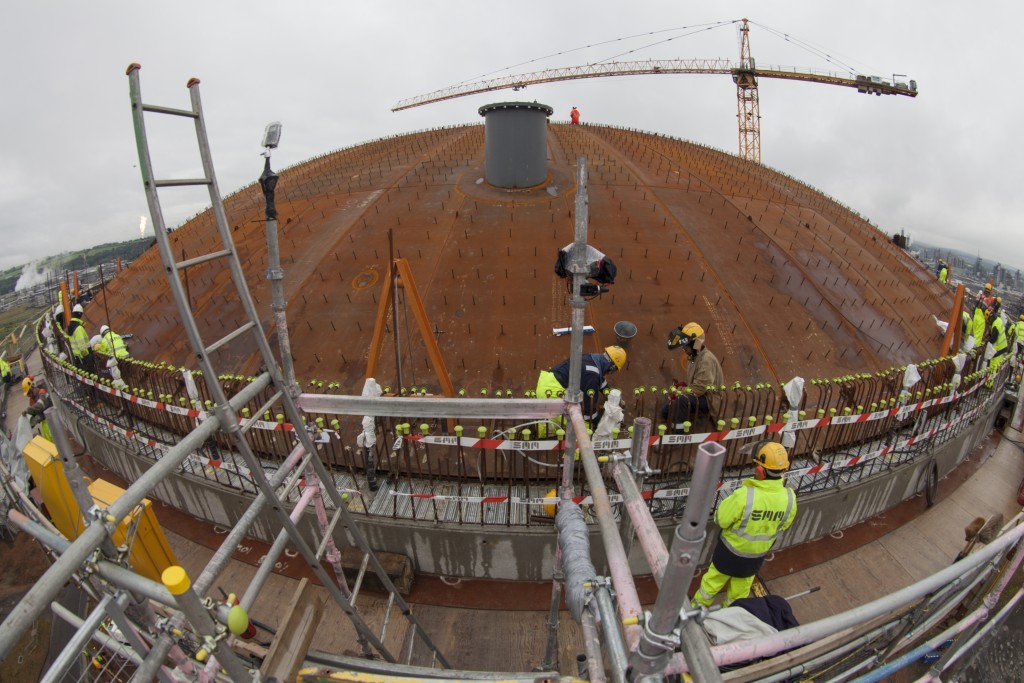
Grangemouth plant operator Ineos yesterday moved a step closer to completing the construction of Europe’s largest ethane storage tank.
In a staggering feat of engineering, low pressure fans were used to lift the tank’s 300ton roof into place on “nothing more than a cushion of air”.
Ineos said the 150ft high tank is being built as part of a £450million rescue plan for Grangemouth, which closed briefly in 2013.
But environmental groups have condemned the project, which will see the tank store ethane gas produced in the US through fracking.
Eight ships have been commissioned to deliver the liquefied shale gas, with the first shipment to arrive from the US next year, while a new import terminal has been built to receive it.
Ineos said the Grangemouth transformation was needed to address the depletion of North Sea gas supplies.
John McNally, chief executive of Ineos O&P UK, said: “This is a landmark day for Grangemouth. We know that US ethane has transformed US manufacturing and now Scottish industry will benefit as well.
“This will secure a cost-effective supply of ethane for the next 15 years, as the North Sea declines. It gives a sustainable base for Grangemouth for that time.”
Part of Grangemouth was closed down in 2013 over an industrial dispute, casting doubt on the future of hundreds of workers at the refinery.
The decision was later reversed after Unite trade union agreed to Ineos’s conditions.
Mr McNally added: “It is still early days on this project as we now set to work on the internal structure of the tank and the surrounding infrastructure. We are on schedule for the first US ethane to arrive in Grangemouth during the second half of 2016.”
Explaining the process of raising the roof, Ineos said the technology was “similar to that of a hovercraft”.
It said the process would take three to four hours and that a stabilisation system of cables and pulleys would keep the roof horizontal during its 150ft climb.
Friends of the Earth Scotland director Richard Dixon criticised Ineos’ plans and described fracking as a dirty, dangerous industry.
Earlier this year the Scottish Government imposed a moratorium on fracking to allow more research to be carried out into its health and safety aspects.
Mr Dixon, said: “We strongly suspect Ineos’ plans for fracking in Scotland would result in blighted communities, with planning permissions sitting unused for years.
“The last thing anyone wants is to have a site next to their home where fracking may happen at some unspecified time in the future.
“Communities could have to wait until nearly 2030 to find out if they are going to be fracked or not.
“This threat of blight is another good reason for the Scottish Government to decide that fracking has no place in Scotland.”
